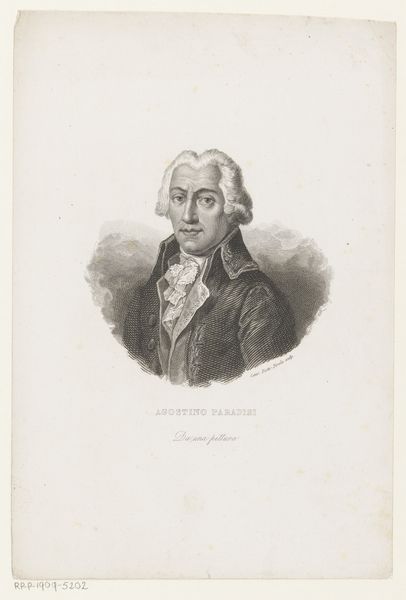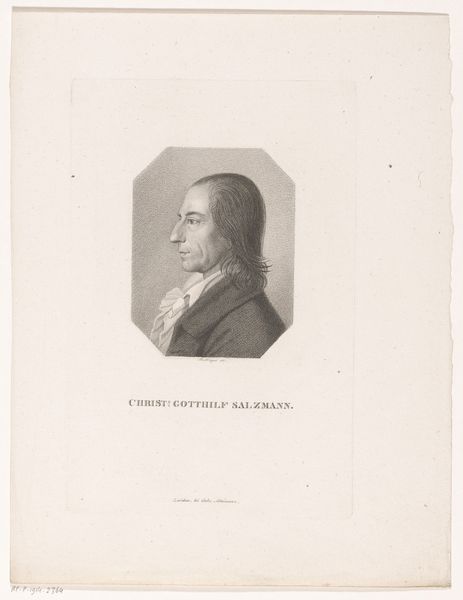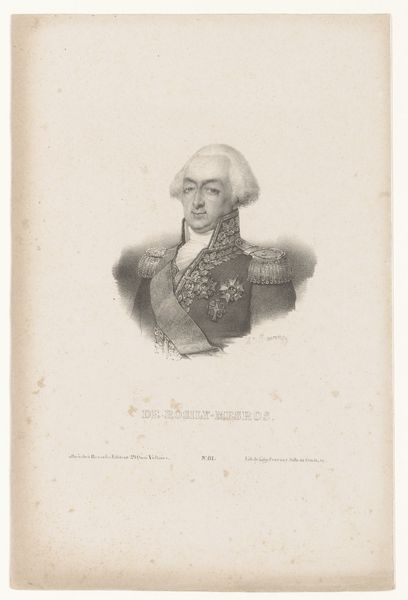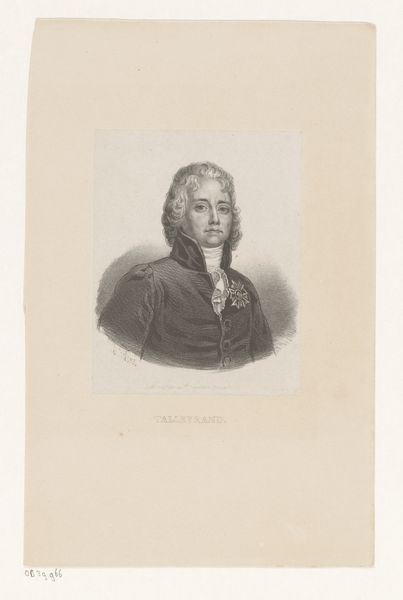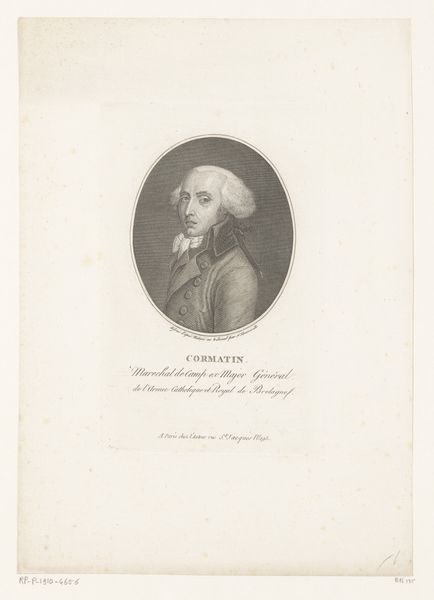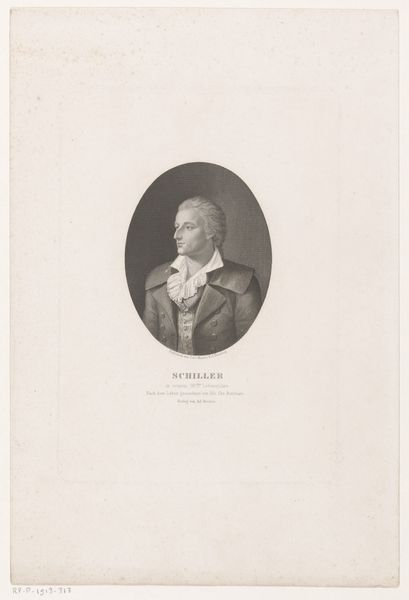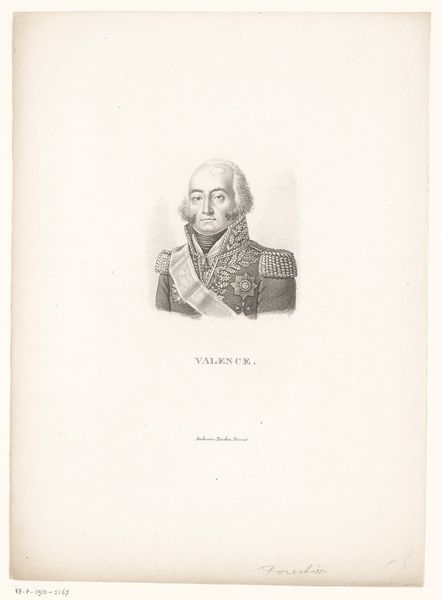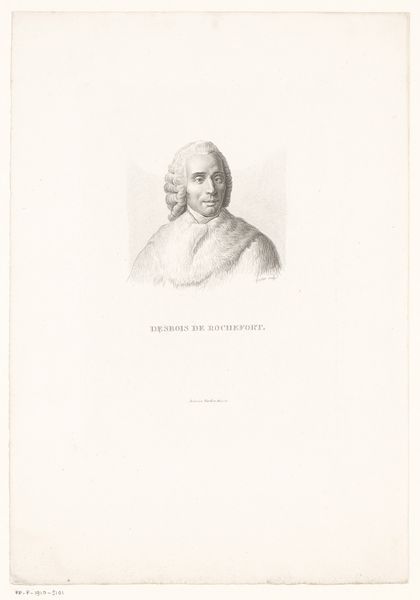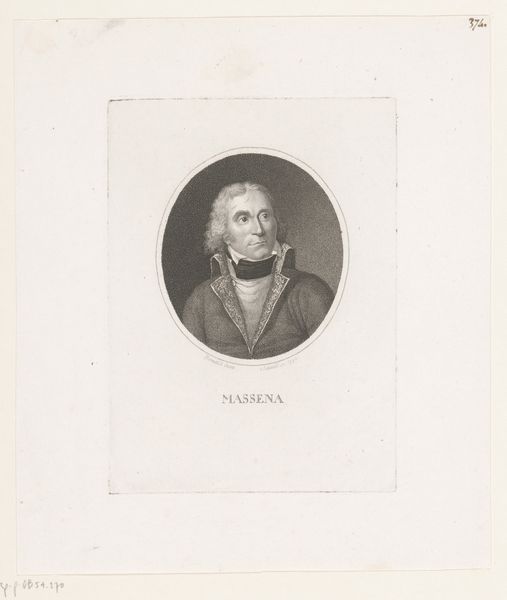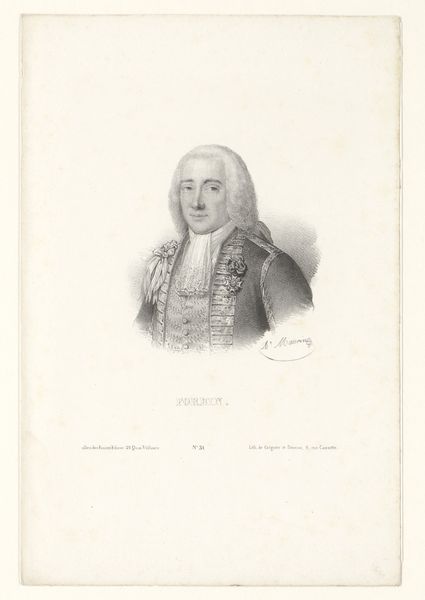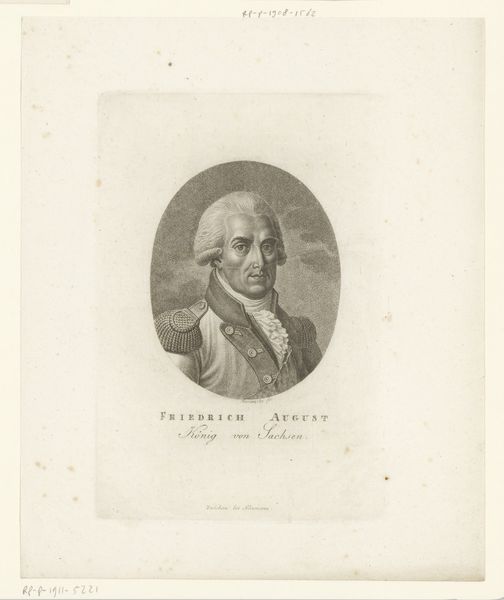
print, engraving
#
portrait
#
neoclacissism
# print
#
old engraving style
#
history-painting
#
engraving
Dimensions: height 226 mm, width 142 mm
Copyright: Rijks Museum: Open Domain
Charles Aimé Forestier created this portrait of Georges-Louis Leclerc, graaf van Buffon, using engraving, a printmaking technique, sometime between 1789 and 1851. Engraving is a process of cutting lines into a metal plate, usually copper, with a tool called a burin. Ink is then applied to the plate, filling the lines, and the surface is wiped clean. When paper is pressed against the plate, the ink is transferred, creating the image. This method allowed for detailed, precise lines, ideal for capturing the textures and details of Buffon's clothing and features. The stark contrast and fine lines give a sense of formality and precision, reflecting the subject's social standing. Engraving was a skilled craft, requiring extensive training, situated between artistry and industrial reproduction. The prints made from engravings were more widely accessible than unique paintings, allowing for broader dissemination of images and ideas. This portrait, therefore, exists at the intersection of artistry, skilled labor, and social communication. Appreciating it involves understanding the material process that brought it into being.
Comments
No comments
Be the first to comment and join the conversation on the ultimate creative platform.


